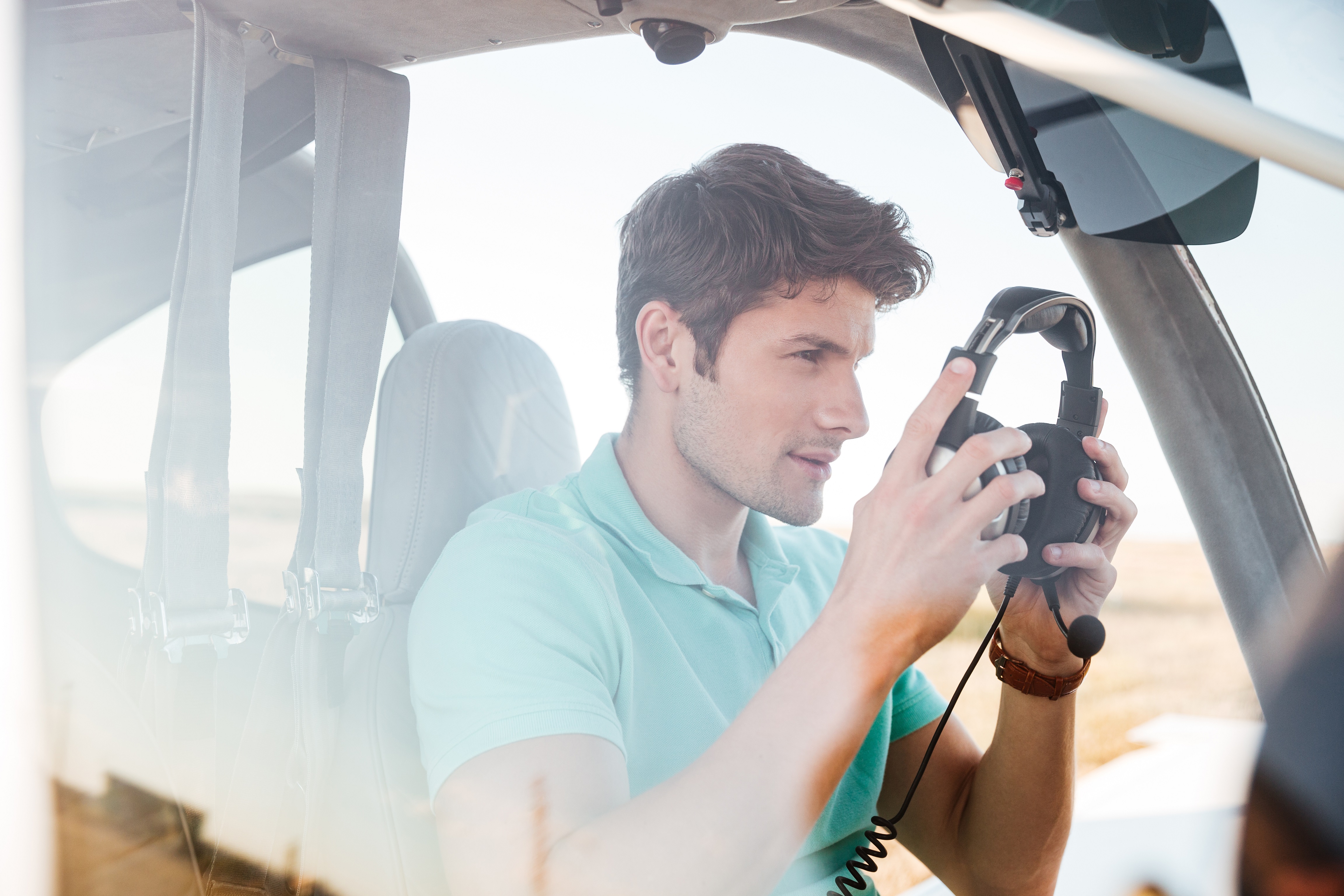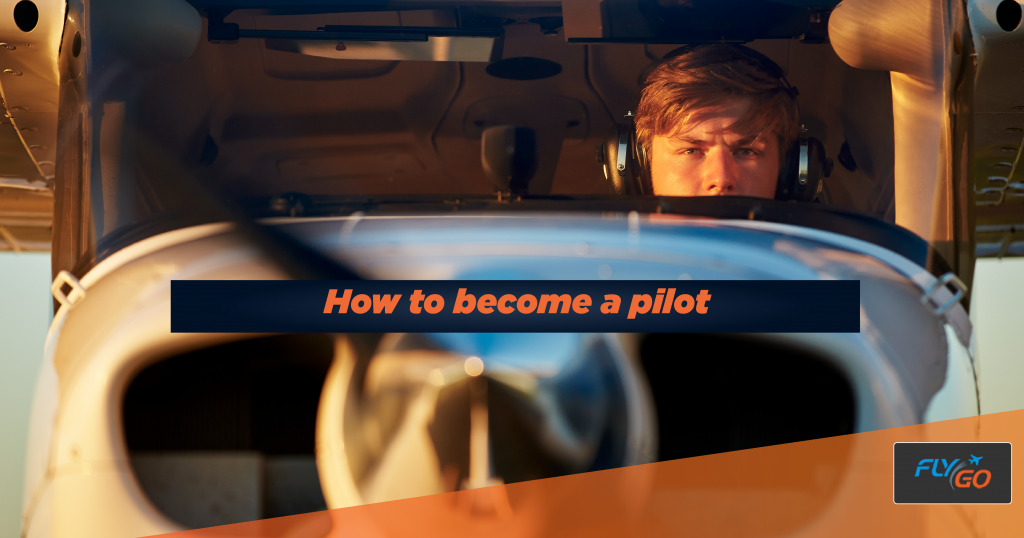Being a pilot is considered one of the greatest jobs one could have. It’s a dream for many to earn their salary while flying around the world. But how does one get there? How can you become a pilot?
For many, the uncertainties and misinformation regarding this profession is enough to derail their vision and destroy their determination. Unlike most careers, the path you have to take in order to earn the captain title with an airline is not that well defined. A pilot’s career is determined by many variables and a lot of these fell out of the control of the individual cadets.
We at FlyGo have many pilot colleagues and with their help we can show you the step by step process of becoming one yourself. So buckle up, and let’s go through this journey together.
Requirements
There are many things you should consider before signing up to a pilot course. These include:
Obtaining a class I medical certificate
Health is crucial for a pilot. There are strict medical requirements for everyone who wants to drive airplanes. This part is a deal breaker for many enthusiastic people who dream of this job. But it doesn’t have to be this way!
There are a lot of myths surrounding this topic such as ‘you need to have a perfect vision’ or ‘you can’t have dental fillings’, etc. While the first one is partially true, it’s still misleading since eye correction can be used, therefore you can wear glasses in the cockpit. The second statement is just completely nonsense, but people still often believe these. Check out the requirements and see for yourself if you may fit them. If you have any doubts just discuss it with a doctor.

Requirements for medical certifications can vary country to country but a good summary of the EASA (European Union Aviation Safety Agency) requirements is available at the U.K. CAA’s website. For American pilots the FAA (Federal Aviation Administration) provides a brief guide as well.
It’s important to note that you can start your training without holding a medical certificate, but it’s still highly advised to do a thorough medical checkup beforehand. If you don’t want to drive commercially, you’ll only need a class II certificate which have lower requirements.
Education
Most often you can start your flight training without a high school diploma, but it’s recommended to continue your studies and get a degree since many airlines require or strongly favor those with a college diploma.
It’s also important to have a basic understanding of mathematics and physics since these subjects will be the foundation of many concepts in the theory training. Luckily a decent training session will teach these concepts so you can easily get away with it if you have not paid much attention for these subjects back in high school.
Another important aspect is your language skills. You need decent enough English skills to fly internationally or to have an airline transport pilot license.
Choosing a school
Once everything is set and done, all is left is to choose a reliable and reasonably priced flight school. It’s easier said than done but there are many sites and forums where you can see reviews and comparisons of different flight schools from different countries.
It is also important to choose between the two paths you can take. Modular or integrated training.
A modular training divide the parts and costs of the training into modules. You only have to pay for one module at the time, for example a PPL module.
Contrary to this, an integrated training usually gives a ‘zero to airline’ option. You will have to pay for the whole course at the beginning. This is usually possible in multiple installments, but you are bounded by a contract.
Both methods have advantages and disadvantages. While an integrated training solution will hold your hand thru the whole process and include more services, it usually costs much more money that has to be paid much faster. Not to mention that should anything happen, and the school goes out of business during the training, your money is most likely gone forever.
In a modular training you are free to take break between modules in order to financially prepare for the next one. If the school goes bankrupt, you might lose the price of one single module but not the whole amount you’ve saved up during the years. And you can continue your training anywhere, even with different school in another country.
But you’ll have to plan further ahead, you might get less care and handholding. For example, if your school operates internationally or you change it in the process then you’ll probably have to organize the way you travel between locations and you’ll have to find your own accommodations. But this gives you much greater flexibility and if you do it right then ultimately it will be cheaper.
The first step: PPL
Let’s say you have found a school, now you can start your training. The first step is to get a private pilot license (PPL). This is the very first license you will be required to have if you choose to become an airline pilot. With this license you can drive airplanes on your own, take passenger with you and obtain different ratings. However, you are not allowed to do any commercial flights, which mean you can’t gain any profit from your flights.
The PPL training consists of two sections, ground training and flight training.
Ground training
You school will most likely provide theory courses before or between your flight training. The goal of this is to teach you the basics of aviation and airmanship. The subdivision of topics can vary but the EASA distinguishes 9 subjects, which are:
- Air Law
- Aircraft General Knowledge
- Flight Planning & Performance
- Human Performance & Limitations
- Meteorology
- Navigation
- Operational Procedures
- Principles of Flight
- Communications
Read our previous blog post to learn more about these subjects.
You will be required to have home exams from each subject. If you successfully finish all of them then you will need to take official CAA exams from each subject. This is a multiple-choice test session with thousands of possible questions. There are various materials available to can help you prepare for this exam but of course we collected many of them in our PPL Exam & Study application. It contains multiple books, study materials for each topic and more than 1.500 questions you might see on the CAA exam.

Flight training
After all the preparation you have finally arrived at the most exciting part of the training. Your first flight. In this module you will learn to handle and fly an aircraft. You will have one or multiple instructors who will teach you how to control the plane, take off and land. They will show you how to use, adjust and read the instruments on the panel, demonstrate the basic flight maneuvers, rules of a pattern circuit, etc. It is without a doubt the most important but also the most appealing part of your training.
During this time you will gain flight hours as a student, of which you must keep track of in a dedicated logbook. If you ever feel that this kind of paperwork is boring, or just wants to keep your flight logs safe and backed up then we can help you with that. Try our pilot logbook with auto-fill function for free, so you don’t have to waste your important training time with the tedious task of filling logs and calculation flight hours on your own. You can also easily keep record of your ratings and experience to see your overall progress with time.
Once you have successfully finished your CAA exams and gained enough flight experience you’ve reached one of the greatest milestones:
Your first solo flight.
Before you fly alone you will be required to have a skill tests with a different instructor. If he or she is pleased with your performance, then you will be sent out for your first solo. An instructor will still have to watch you from the ground, but you will be the only person in the cockpit of a flying plane for the first time. From this moment on you will have the possibility to rent a plane and fly it alone under your instructor’s oversight from the ground.

At the same time, you can continue to take further lessons with an instructor too. The second half of your training is going to introduce you to cross-country flights. You will learn practical navigation skills using pilotage and dead reckoning. You will also learn to use some basic navigational instruments such as VOR/DME. The logic behind these instruments can be tricky to learn so we recommend you practice on the ground before each flight. We offer high quality simulator applications so you can easily learn the secrets of these instruments.
After a cross-country check flight, you will be required have a cross-country solo flight as well. It’s a stressful process because navigation with classical methods can be difficult for someone who may have just started flying alone a few weeks or months prior. But fear not, because you are allowed to utilize backup systems, so you won’t get lost. You can use our Direct-To Aviation GPS app to always find your way back home.
After completing all this and having a minimum of 45 hour experience you can be signed up to a final skill test. This consist of a 1.5 – 2 hours cross-country flight with aerodrome practices and emergency simulations. If you pass it, you have successfully finished your course and became a private pilot!
You should celebrate this great accomplishment but don’t forget that your journey has just begun… In part 2 we will show what’s left to do in order to fly for airlines.
This article is designed to summarize the main milestones in order to become a pilot, but if you have anything to add, feel free to send us an email to support@flygo-aviation.com.
We regularly post fresh content (e.g. educational videos, news, app updates) on our social media feeds, you can subscribe to our YouTube channel, follow our Facebook page and don’t forget to subscribe to FlyGo’s mailing list to get the first-hand news!

